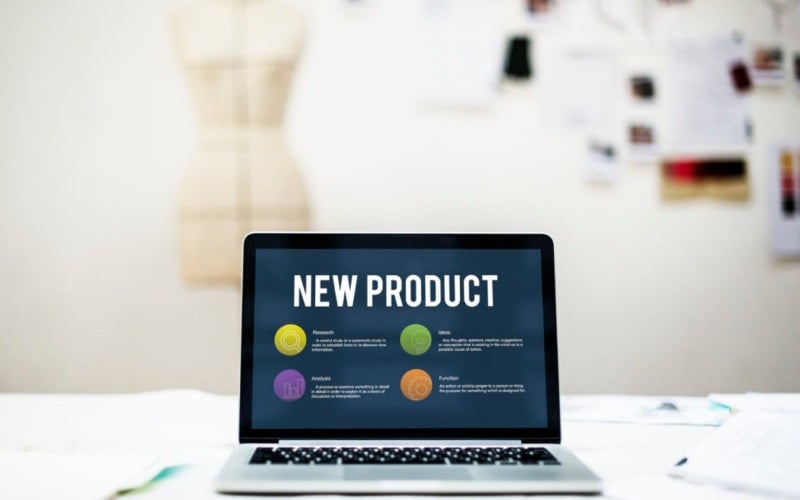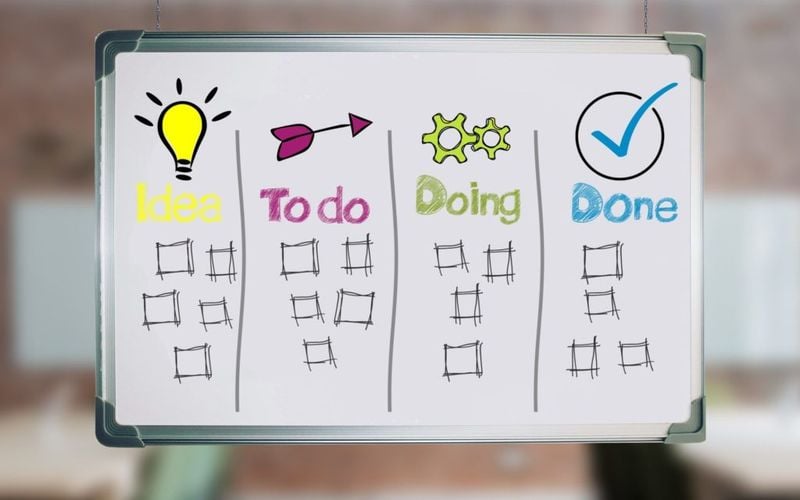The 6 Phases of the Design-Thinking Framework
What is design thinking?
Design thinking is not a new idea by any means, but it is still very much in use today. In fact, many big, successful corporations are likely using design thinking, including Google, Apple, General Electric, and Samsung.
Design thinking is more than imagining a design of something, it’s more of a solution-based method of solving problems. If a company is designing something (a product or service), then there is going to be a need to understand the target market. Designing a product that works amazingly but does not meet any particular need is completely pointless.

As for who created design thinking, it’s hard to say. The idea goes as far back as the early 1900s when designers Charles and Ray Eames practiced what they called ‘learning-by-doing’ and were considered true innovators of their time. The methods that they used for their most famous design project – the Eames Chair, was very similar to the design thinking framework used today.
It was not called ‘design thinking’ until the 1990s when David Kelley and Tim Brown (of IDEO) coined the now infamous buzzword.
The Design-Thinking Framework
There are different variants of design thinking, but even though different people will have a different number of steps and different ways to describe the process, the idea remains the same.
Phase 1. Empathize
If you want to attract your target market, then you will want to think like they do and feel how they feel – you will want to be able to empathize with them. This phase will involve speaking to actual users or consumers and directly observing what they do, what they want, and how they think and react. It should answer the questions ‘what motivates them, and what discourages them’?
Phase 2. Define
In the first phase, you would have gathered a large amount of information, and now you will establish exactly where your users’ problems exist (and also establish how many problems there are). If done correctly you will start to see trends emerge, and common pain points will become evident. The more users that were observed, the more accurate the data will be. This will also be the phase where any user needs that have not been met will become obvious.
Phase 3. Ideate
The most important thing that you should have gotten out of the first two phases is the unmet needs of the users. Ideate will require a lot of brainstorming and the creation of sometimes crazy (and highly creative) ideas to address these unmet needs. The sky’s the limit here, no idea is too crazy! The best way to approach this phase is to have your team sketch out as many far-fetched ideas as possible individually, and then have them share these ideas, where further ideas could arise.
Phase 4. Prototype
All designers love prototypes because it is where they get to see their ideas come to life. In this phase you will take your crazy ideas and see if they are remotely feasible by building real, tactile solutions. This is where you will find out whether your impossible ideas are really impossible! Feedback is a critical part of the prototype phase.
Phase 5. Test
The test phase is when your idea or product will leave the designers and get into the hands of the actual users. The question ‘does this solution meet the unmet needs of the user’ will be answered, and you should have an idea of whether it has the potential to improve how the users think, do, and feel. Use real customers for this phase as their reactions will be the most beneficial and productive. This phase can continue for some time as multiple tests may be needed until you find one that works.
Phase 6. Implement
This is where it starts to get fun. Your vision will be put into effect and be materialized in some way (whether by a physical product or a digital service). This is the final step but interestingly, the one often forgotten and given the least attention.
Why use the design-thinking framework?
The main benefit that is received from using the design thinking framework is the fact that it is a user-centered process, which means that the final product is always going to be more likely to meet the needs of the users. And this is the entire point of the design in the first place! The design thinking framework also enables the designer to not only recognize complex problems in the design process but allows a method of finding a solution – a solution that works and meets the needs of the users!
The phases involve brainstorming and hands-on approaches that simply cannot be beaten by any other design method. Often the mind of a designer can be ambiguous, messy, and disorganized – using the design thinking framework enables them to break the process down into 6 clear phases. No matter what sort of product or idea you are designing, you will find benefit in the design thinking framework.
Conclusion
There is no denying the fact that no matter what industry you are in, users have increased demands and higher expectations than ever before. There are more and more unmet needs that are appearing, and these users are looking for products and services to expressly meet those needs.
If you can use this framework to design something that is appealing and most important, meeting a need that is not currently being met, then you will have a huge advantage over other designers.
The design process is rarely a simple one, and by breaking it down into clear manageable steps that have a clear and measurable goal, this process is made much simpler and the chances of success are much higher.
Some people consider design thinking to be a form of problem-solving, but it is so much more – it is problem recognition.
It is only through the recognition of potential problems that the solution can be found effectively and efficiently.




